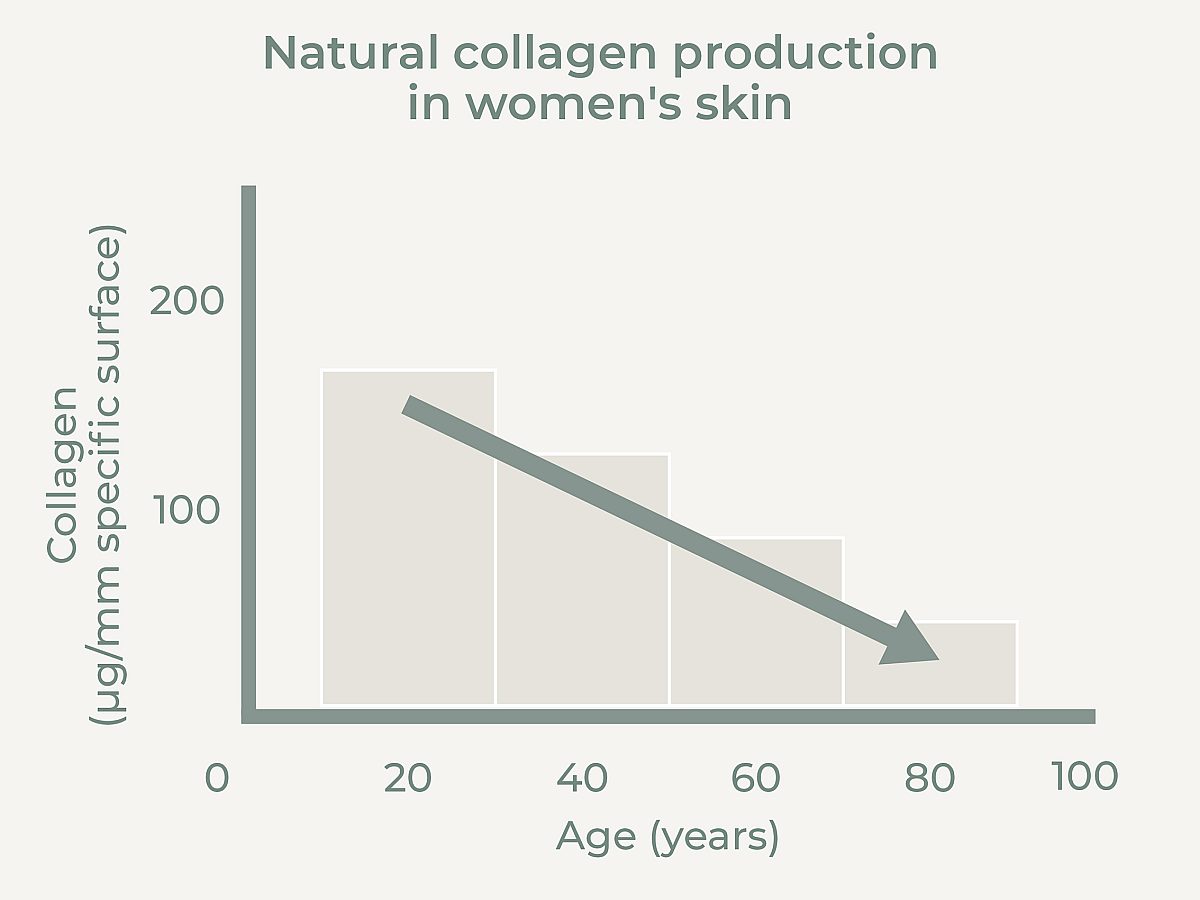About biostimulators
Biostimulators are substances used in esthetic medicine to stimulate the body's own substances and processes for healing and regeneration.
In contrast to hyaluronic acid fillers, which are used to instantly remedy age-related volume loss or deep wrinkles, biostimulators activate the body's own substances – such as collagen, elastin, and hyaluronic acid – to set in motion a "self-healing" regeneration process that shows its effect over a period of time.
What types of biostimulators are there?
Biostimulators are aqueous compounds that contain a collagen-stimulating substance. Some are based on calcium (CaHA) e.g. Radiesse®, while others consist of poly-L-lactic acid (PLLA) e.g. Sculptra®, or contain cross-linked hyaluronic acid e.g. Profhilo®.
Collagen content of the skin
The skin's natural collagen production decreases by 1% per year from the age of 20 onwards. At all ages, women have less collagen than men. However, collagen content declines at equal speed for both sexes.


The ratio of the collagen content of the skin (expressed per unit area of skin) to age in women and men.
Important
The above descriptions only serve to clarify what biostimulators are and what products are available on the market. Your doctor will be able to tell you more about whether biostimulator treatment is advisable in your case and which of the above methods are suitable for you.
About PROFHILO®
PROFHILO® is a cross-linked hyaluronic acid that does not act selectively but literally floods the skin with moisture and supports the formation of elastin and collagen.
About SCULPTRA®
The Sculptra® biostimulator consists of poly-L-lactic acid. Its injection stimulates collagen production in the deeper layers of the skin and thus tightens the connective tissue. As a result, wrinkles are also visibly smoothed.
About RADIESSE®
Radiesse® treatment can be used to fill deep wrinkles and restore volume to the face in cases of volume loss. Radiesse® is based on calcium and the injection stimulates the production of new collagen in the treated area.





